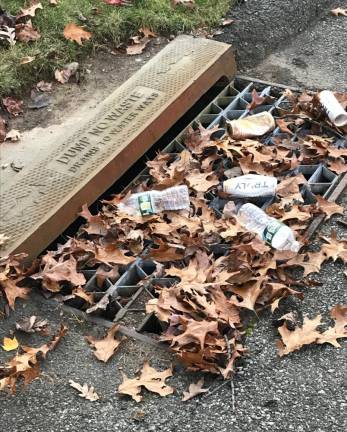‘Adopt a Storm Drain’
West Milford. Residents are asked to help clear storm drains to help alleviate future storm drain-related problems.

Homeowners throughout the Township of West Milford are asked by the West Milford Environmental Commission (WMEC) and the West Milford Department of Public Works (WMDPW) to voluntarily participate in their joint new “Adopt a Storm Drain” campaign.
Participants would monitor a storm drain in front their homes or nearby on their street to help alleviate future storm drain related problems.
“We know there are many residents who already remove leaves, ice, snow and road debris from the surface of drains,” WMDPW director Ed Steines said. “We appreciate that.”
But Steines also made it very clear that no one should attempt to lift a storm gate or enter a storm water basin. If a drain is clogged or in need of repair, residents should call the WMDPW to report the condition and location of the drain, Steines said.
The environmental impact of 4,000 storm drains
With more than 4,000 storm drains throughout the township, many of which feed into streams and local lakes, keeping the surface drains clear of leaves, snow and debris helps to reduce harmful nutrients from finding their way into our many lakes, WMEC chairperson Steve Sangle said.
In his 37 years as WMEC chair, Sangle has seen the evolution of storm water management in the township. “By and large, the township does an excellent job maintaining our storm drains, considering West Milford comprises 80 square miles, but we can all help in our own neighborhood,” he added.
‘All we ask ...’
The WMDPW maintains a regular schedule of monitoring the town’s storm drains but help from residents would go a long way toward ensuring that they are functioning properly, Steines said.
“All we ask is for homeowners to keep the surface of storm drains clear and report any that appear to be backing up.”
In compliance with the NJDEP, West Milford updated its stormwater pollution prevention plan and stormwater control ordinance last year. Thirty percent of precipitation that hits the ground in New Jersey winds up as stormwater runoff, resulting in more pronounced flooding events statewide, according to Michael Pisauro, Policy Director of the New Jersey Watershed Institute.